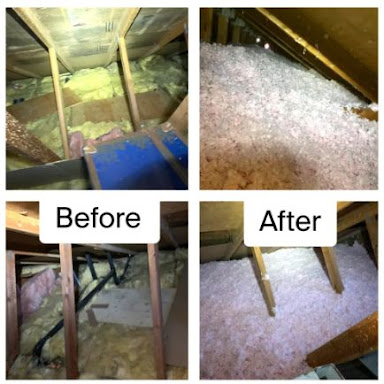Three most common types of insulation used in residential and commercial building
Insulation is an essential component of any building, as it helps to keep the indoor temperature comfortable while reducing energy consumption. There are various types of insulation, but the three most common types used in residential and commercial buildings are batt, duct, and attic insulation.
Batt Insulation
Batt insulation is
the most common type used in walls, floors, and ceilings. It is made of
fiberglass, mineral wool, or cotton and is available in rolls or pre-cut
panels. Batt insulation is easy to install and can be used in various
applications.
Importance of Batt Insulation:
1.
Energy
Efficiency: Batt insulation helps to reduce energy consumption by keeping
the indoor temperature constant. This reduces the need for heating or cooling
systems, thereby saving energy and lowering utility bills.
2. Sound Absorption: Batt insulation Arlington
WA also helps to reduce noise pollution by absorbing sound waves,
making it an ideal choice for soundproofing walls and floors.
Duct Insulation
Duct insulation
insulates heating, ventilation, and air conditioning (HVAC) ducts. It is
usually made of fiberglass or foam wrapped around the ducts to prevent heat
loss or gain.
Importance of Duct Insulation:
1.
Improved Indoor
Air Quality: Duct insulation Everett WA helps to prevent moisture
from condensing on the ducts, which can lead to mold growth and poor indoor air
quality. By preventing moisture buildup, duct insulation helps to improve
indoor air quality.
2. Noise Reduction: Duct insulation helps
to reduce noise pollution by absorbing sound waves that travel through the HVAC
system, making it an ideal choice for soundproofing HVAC ducts.
Attic Insulation
Attic insulation is
used to insulate the roof and attic of a building. It is usually made of
fiberglass, cellulose, or foam and is installed between the roof joists or
attic floors.
Importance of Attic Insulation:
1.
Energy
Efficiency: Attic insulation helps to reduce energy loss by preventing heat
transfer between the attic and the living space. This ensures that the indoor
temperature is constant, which reduces the need for heating or cooling systems
and lowers energy consumption.
2. Moisture Control: Attic insulation
Arlington WA helps prevent moisture buildup in the attic, leading to
mold growth and poor indoor air quality. By controlling moisture, attic
insulation helps to improve indoor air quality.
In conclusion,
batt, duct, and attic insulation are essential components of any building. They
help to improve energy efficiency, reduce noise pollution, improve indoor air
quality, and improve indoor comfort. Homeowners and building owners should
consider investing in insulation to improve their homes' or buildings' energy
efficiency and comfort.




Comments
Post a Comment